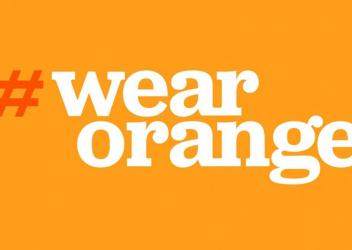Research In Action
Research In Action
Breadcrumb

Firearms claimed the lives of 2,590 children and teens in 2021, a 50% increase over the previous 2 years. The numbers killed, each someone’s child, sibling, classmate or friend, are impossible to fathom. As healthcare providers, they drive us to be part of the solution.
Preventive strategies to the public health crises of youth firearm injury and death can feel difficult to come by, given the intense polarization around gun control in the country. But when we consider that 37% of youth firearm fatalities are from suicide and unintentional shootings, and that these fatalities almost always involve a family member’s gun, one practical solution becomes clear. When children find guns inside homes, those as young as 2-years-old are strong enough to pull the trigger. And when a teen experiences suicidal thoughts, the presence of a firearm in that moment of heightened emotion can be the difference between life and death – 90% die before they can reconsider. Restricting youth access to firearms is well-proven to save lives.
An Effective Strategy: Safe Firearm Storage
According to the American Academy of Pediatrics, removal of firearms from the home is the most protective measure but “may not be acceptable or achievable for many firearm-owning families”. In households with firearms, it is therefore crucial that all firearms are stored locked, unloaded and separate from the ammunition.
Safe firearm storage sits apart from the political controversy. It is considered by those across the ideological spectrum to be a fundamental tenet of responsible firearm ownership, and we know that even modest increases in safe storage could reduce youth firearm fatalities by as much as 32%. Yet less than half of U.S. firearm owners store all of their weapons securely. As a result, almost 5 million children across the country live in homes with unsecured firearms.
Clinicians Can Make an Impact
As pediatricians, we can play a significant role. Studies show that safe storage counseling by health care providers, particularly when accompanied by distribution of gun locking devices, can have enormous impact on firearm storage practices. This is why, at Children’s Hospital of Philadelphia, we’re making gun locks available for patients and families at many care locations, and are testing ways to integrate this workflow throughout our enterprise.
When I talk to health care providers both locally and across the country about the importance of safe storage counseling, recurrent themes emerge. We are passionate, as a profession, about preventing injury and death from firearms. We are frustrated by the political impasse over common sense gun control . We believe it is our role to do everything possible. But studies show that despite these deeply held beliefs, significant barriers exist to safe storage counseling in actual practice.
Providers cite concerns about time in the exam room, and many worry that patients will find discussions about firearms too politically sensitive, too private, and too controversial. Thankfully, studies of parent perspectives show this is not the case. Families, including those who own firearms and those who don’t, see pediatricians as credible messengers when it comes to safe firearm storage and are appreciative and accepting of this guidance.
In my own practice I find this is almost always the case. When it isn’t – when a parent may bristle as I approach the subject of firearms – I feel the room soften as soon as I explain that the reason I’m asking is to keep everyone safe. This is a collaborative conversation. It is about gun safety, not gun control. Instead of centering on what might divide us, it centers on the value we share with families more than any other: the health and safety of children.
Over the last 4 years, a growing team of researchers, health care providers and violence prevention advocates at CHOP have successfully implemented safe storage counseling and locking device distribution into patient care in our Emergency Departments, three primary care centers and one subspecialty practice. We have also partnered with our Security team, Safety Center and Office of Community Impact to make these resources available to visitors and staff, and to members of our surrounding communities. Over the next two years, thanks to a generous Chair’s Initative grant from the Department of Pediatrics, we will test and enhance these pilot initiatives in order to develop an enterprise-wide firearm safety program that is cohesive and standardized, while remaining adaptable the wide range of health care settings across our enterprise. Our goal is for safe firearm storage to become a routine, integral aspect of the care we deliver.
Youth access to firearms is a public health crisis and as pediatricians, we are working towards a solution. A young person dies by suicide every 2 hours and 11 minutes in this country, and a child dies every other day in an unintentional shooting. We can prevent childhood firearm injury and death by doing everything in our power to ensure all firearms are stored locked, unloaded and separate from the ammunition.


